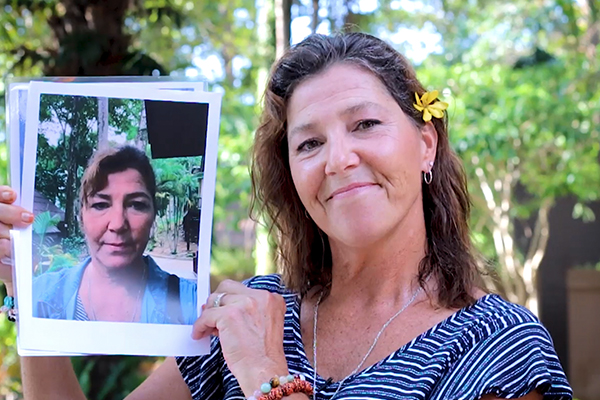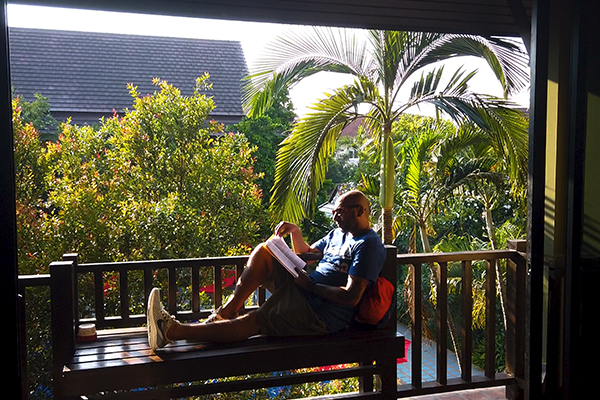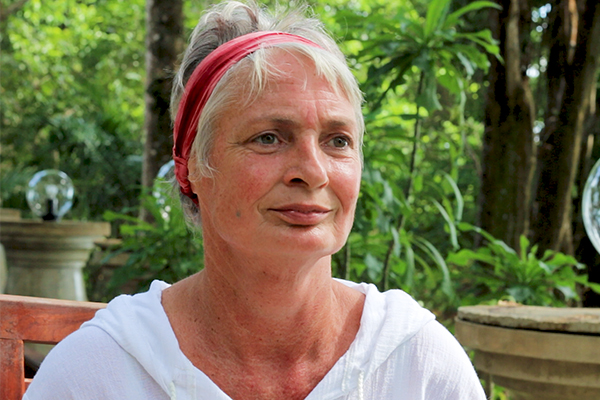OPEN RELATIONSHIPS

By
Raymond Guddah
BSc, Dip, MBACP
Senior Counsellor at DARA Koh Chang
CLIENT CONFLICT
I began my career as a counselor in London, and as a member of an ethnic minority group, initially I found it very difficult. Clients would question me about my credentials, and quiz me on the criteria for being a counselor, in an effort to assess whether I was ‘good enough’ for them.
These early challenges left me wondering whether I had in fact chosen the right career path. Luckily however, I received mentorship from other counselors, which allowed me to experience a very useful paradigm shift, and a resultant bump in confidence. This gave me insight into what was really important if I was to create positive outcomes for my clients.
I discovered that, according to the researcher Alexandra Bachelor, successful therapy needs to be based on a relationship of authenticity, trust respect and empathy between therapist and client 1
So, my concern switched from ‘how can I validate myself to my client’ to how can I foster trust, empathy and mutual respect in a genuine way?’
CULTURAL CONTEXT

The UK is a multiculturally diverse place, and therefore my focus was often on establishing a good therapeutic rapport with clients who were from culturally different backgrounds to me. I realised the importance of viewing people as not only existing within a cultural context, but also as unique individuals. I had to develop wide-ranging skills to assess, intervene, approach and engage clients if we were to emerge with a positive outcome from therapy.
Counselling is a nurturing and meaningful interaction between two or more individuals where goals are set and challenged with trust, respect and empathy, with a focus on a robust prediction of the outcome of the quality of counsellor and client relationship. 2 I therefore decided to aim on working with the transference and counter transference feelings within my relationship with my clients.
Transference is a phenomena which often arises in therapy, and is simply when a client redirects feelings for others onto me in my role as therapist.
Countertransference can happen as a reaction to transference, and it occurs if I transfer emotions back to the person in therapy.
It is worth acknowledging that in most therapies, there could be moments when tensions and probably strong feelings (i.e anger, frustration, disappointment) may arise between the therapist and the client. Feelings of boredom, frustration or a sense of being ‘stuck’ in therapy can actually serve to highlight potential challenges in the establishment of a good therapeutic alliance. Once highlighted, these challenges can then be worked through.
Based on these factors, my goal then was to start making my clients feel safe by being non-judgmental, authentic and congruent and being aware that what one client might consider safe, may not be safe for another.
WHO ARE YOU?

I was also frequently checking in and identifying with who ‘I was’ to my client. This was important because if the relationship lacked authenticity, my client would not feel safe and there wouldn’t be a genuine investment in the work from both the therapist and the client.
A relationship based on trust is crucial in multi-cultural therapy and it requires patience and exploration of the clients’ perspective of the nature of therapy they feel they require. It is also helpful to explore and process painful and difficult experiences of racial, cultural and social nature right from the beginning of therapy. 3
As a Therapist, I started to consider the role of my identity and professional awareness of competence surrounding issues of ethnicity, power and privilege, as these are fundamental in building a therapeutic relationship. 4 With this in mind, I started developing the practice of listening actively to my clients.
I would allow my clients to ‘Feel their feelings’ and to be ‘themselves’ without telling me what they felt I needed to hear. I would ensure that my client had enough confidence in me to acknowledge that I knew what I was doing and not show any sign that I could or would reject them.
CREATING THE SPACE FOR CHANGE

As a therapist I feel that our clients need to know that we are hearing them and for us not to jump in to ‘save’ or advise them and this experience of feeling heard and acknowledged (maybe for the first time for some) can be transformative. Clients who have had the opportunity to express their feelings, fantasies, fears and desires in a safe process can then make sense of the need to consider change.
Working with transference has been very significant for me with my background in Psychodynamic Psychotherapy. I am aware of the possible triggers that lie within my role, my personality, my cultural background and my ethnicity. Transference is neither good nor bad, and sometimes it is almost unavoidable!
Sometimes it can actually be a useful tool to work with thus providing therapist and client with an opportunity to address the issue of the ‘elephant in the room’. For example, let’s say I remind my client of an abusive partner in terms of appearance, accent, mannerisms, whatever. The realization of this and acknowledgement by the client that I inadvertently bring up these emotions in them and they are projecting assumptions onto me as a result, can give us vital material which we can then work through to help the client deal with these difficult thoughts feelings and emotions.
I have managed to admit to myself that as a social being my core values, core beliefs and my perceptions of the world, can influence the development of my therapeutic relationships with my clients. I am still ‘learning’ to allow myself to embrace the concept of ‘openness’ in order to address issues of race, culture and its relevance to my work.
1 Bachelor, A. (1995). Clients’ perception of the therapeutic alliance: A qualitative analysis. Journal of Counseling Psychology, 42(3), 323.
2 Lambert, M. J. (2013). Outcome in psychotherapy: the past and important advances.
3 Lopez, F. G., Ramos, K., Nisenbaum, M., Thind, N., & Ortiz-Rodriguez, T. (2015). Predicting the presence and search for life meaning: Test of an attachment theory-driven model. Journal of Happiness Studies, 16(1), 103-116.
4 Helms, J. E., & Cook, D. A. (1999). Using race and culture in counseling and psychotherapy: Theory and process. Allyn & Bacon.
Latest posts by Darren Lockie (see all)
- Cocaine burnout - February 25, 2020
- What is pathological lying? - February 21, 2020
- Ireland’s growing drug problem - January 20, 2020
+66 8 7140 7788









